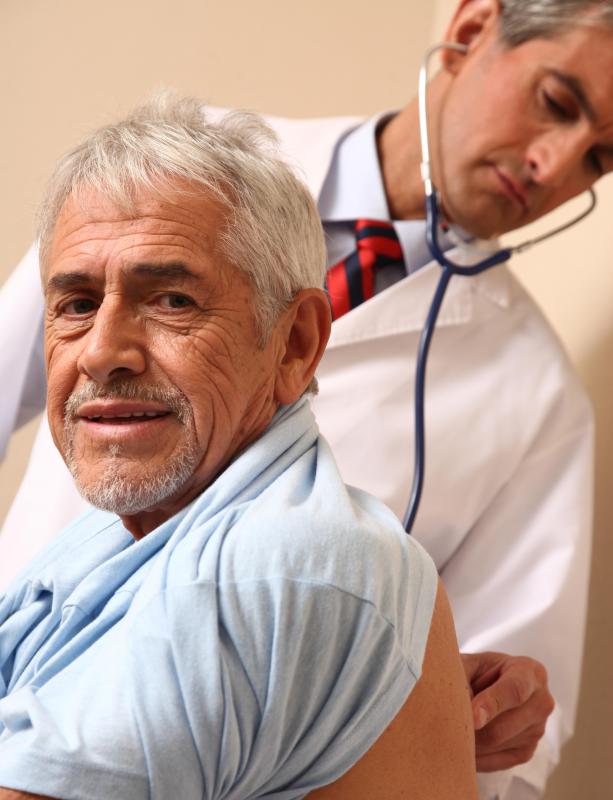At TheHealthBoard, we're committed to delivering accurate, trustworthy information. Our expert-authored content is rigorously fact-checked and sourced from credible authorities. Discover how we uphold the highest standards in providing you with reliable knowledge.
What is the Hering-Breuer Reflex?
The Hering-Breuer reflex is a reflex which regulates respiration rate. It is also linked with heart rate, because the signals sent through the nervous system in association with this reflex are sent along the same pathways which regulate the heart rate. The Hering-Breuer reflex works in slightly different ways among different species, and is present from birth so that organisms can breathe independently. This reflex has been studied extensively in humans and non-human animals to learn more about how it functions and the conditions under which it can be impaired.
The primary purpose of this reflex is to limit the possibility of overinflating the lungs. Receptors in the respiratory system known as pulmonary stretch receptors monitor the lungs as they start to expand when someone takes a breath. When these receptors detect that the lungs have inflated sufficiently, they send a signal which triggers an exhalation. These receptors also kick in at the end of the exhalation to stimulate another inhalation.

This reflex is named for researchers Josef Breuer and Karl Ewald Konstantin Hering, who documented the reflex in the late 1800s while studying animals under anesthesia. They demonstrated that they could create apnea, a cessation of breathing, by keeping the lungs overinflated. This has also been documented in people, making the Hering-Breuer reflex a cause for concern among anesthesiologists who must maintain the right mix and volume of gases in surgery to provide patients with the oxygen they need without damaging the lungs.

When someone is placed on a ventilator because he or she is having trouble breathing, care must be taken to avoid overinflating the lungs because the patient's Hering-Breuer reflex cannot kick in to regulate breaths, since the ventilator is doing the breathing for the patient. The ventilator can be programmed to adjust the volume of air pushed into the patient's lungs and the frequency of breaths, striking a balance which provides the patient with oxygen while keeping the lungs safe.

The vagus nerve and the area of the brain known as the pons are both involved in the Hering-Breuer reflex. Impairments in these areas can lead to breathing arrhythmias because the respiratory system is no longer able to function as it would normally. This can be a concern in the wake of strokes and other injuries to the nervous system, and certain chemical compounds can have a depressive effect on these areas of the nervous system, leading to difficulty breathing.
AS FEATURED ON:
AS FEATURED ON:















Discussion Comments
@bythewell - The knee jerk reflex is called the Patellar reflex.
And reflexes are involuntary, you're right.
The Hering-Breuer reflex is involuntary, but it mostly doesn't control your normal breathing. It might in some animals, but not in humans.
It just stops you from continuing to inflate your lungs until they pop.
There are two actually, the inflation and the deflation reflex and one stops you from popping your lungs and the other stops you from deflating them too much.
Even reading this article made me aware of my breathing, which is kind of an uncomfortable feeling. Whenever I'm too aware of my breathing I feel like I'm suddenly not getting enough air.
I guess this is the kind of reflex that people can control, as they can hold their breath (even when the lungs aren't completely inflated). Some people can apparently hold their breath until they pass out even, although I've never tried that.
I always thought a reflex was something involuntary, like the knee jerk reflex when the doctor hits a nerve in your knee with a little hammer. Are there different kinds of reflex?
Post your comments